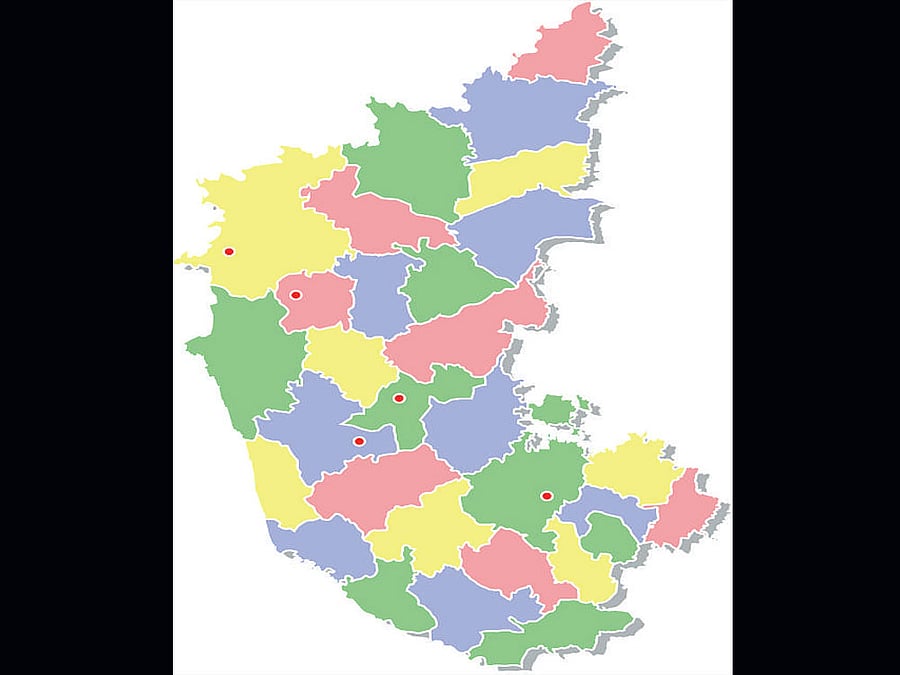
As we celebrate yet another Karnataka Rajyotsava today, it’s time to look at how our State came into being.
It’s a known fact that on November 1, 1956, all the Kannada-speaking regions of southern India came together to form one state. The Unification Movement or the linguistic mobilisation of people living in different political regions into one geo-political unit was also a paradigm shift in the cultural synthesis of the State.
The movement began during the second half of the 19th century with the establishment of Karnataka Vidyavardhaka Sangha in 1890 in Dharwad. The unification movement went hand in hand with the freedom movement and became stronger in the Kannada-speaking regions of Bombay Presidency and Hyderabad province. Soon, Dharwad became the movement’s epicentre and Karnataka Vidyavardhaka Sangha, its heart.
Apart from frontline organisations like the Vidyavardhaka Sangha in Dharwad and the Kannada Sahitya Parishat in Bangalore (formed in 1915), All-Karnataka Writers Conference and Karnataka State Political Conference, which were held in Dharwad in 1908 and 1920 respectively, have also contributed significantly to this movement.
Initially, the unification was only an idea of litterateurs and journalists. Later, it succeeded in enlisting the support of political leaders too. Hence, in 1920, it was decided to push for the unification through a Congress session. A number of delegates were present at Nagpur session of the Indian National Congress held in 1920 to press for this cause. In 1923, Hindustani Seva Dal, led by Dr N S Hardikar, started a signature campaign in this regard.
In 1924 at Belgaum, the annual session of the Indian National Congress was held and was presided over by Mahatma Gandhi. Here, Huilgol Narayana Rao sang the song, Udayavagali Namma Cheluva Kannadanadu (Let our charming Kannada Nadu arise), which not only enthralled the audience, but also helped in raising the spirits for the cause. In the same venue, the Karnataka Unification Conference was held. Here emerged Karnataka Ekikarana Sabha, which later became famous as Karnataka Ekikarana Sangha.
With the movement, an awareness about Kannada language and literature grew. A remarkable progress was witnessed both in the prose and style of the language. Aluru Venkata Rao’s Karnataka Gatha Vaibhava raised awareness about the history and cultural contributions of different ruling dynasties. Kannada came to be synchronised with new thinking and beliefs. Its linguistic style, grammar and style of composition began to evolve too.
The anti-partition feelings in Bengal influenced many to think about of having a separate statehood for Kannada-speaking people too. Aluru Venkata Rao’s interpretations about new spirits of nationalism based on Kannada language and literature boosted the movement. His concept of Karnatakatwa included everything related to Kannada.
During 1940s, a cry for a separate state for the Kannada-speaking people increased. Karnataka Ekikarana Parishath began to identify itself as an important association in this regard. Other new areas like Bellary, Kasargod and Mangalore emerged as new centres of the movement. In 1947, Karnataka Ekikarana Mahasamithi came to be constituted with people like S Nijalingappa, A J Dodmeti and Srinivas Rao Mangalvedhe as its members.
In 1951, the Congress announced its election manifesto which contained assurances regarding the creation of linguistic provinces. In fact, the party considered this as an urgent political need. Hence, the problem once again came to occupy the centre stage. The Karnataka Unification Conference, Karnataka Ekikarana Sangha (Mahasimithi earlier), Kannada Sahitya Parishat and other such organisations revamped themselves. Soon, new areas like Raichur and Bidar emerged.
In 1953, Akhanda Karnataka Rajya Nirmana Parishat came to be constituted. Leaders like K R Karanth, Jinaraja Hegde, Channappa Wali and others spearheaded the movement. A Congress session was held in Hyderabad in January 1953 in which the party passed a resolution in favour of the formation of the state of Andhra Pradesh only. This development prompted many leaders in diverse Kannada-speaking regions to demand a separate statehood too.
In December 1953, the centre appointed a high-powered committee called the State Reorganisation Commission with members like Fazal Ali, K M Panikkar and H N Kunzru to suggest state boundaries. Many in Mysore State raised their apprehensions about their state merging with the backward northern states fearing it will set them back.
Eventually, the report of the commission recommended the unification of all Kannada-speaking regions. Accordingly, the new state of ‘Mysore’ came into being on November 1, 1956. Much to the desire of the Kannadigas, after 17 years, the state was named as ‘Karnataka’ on November 1, 1973.
